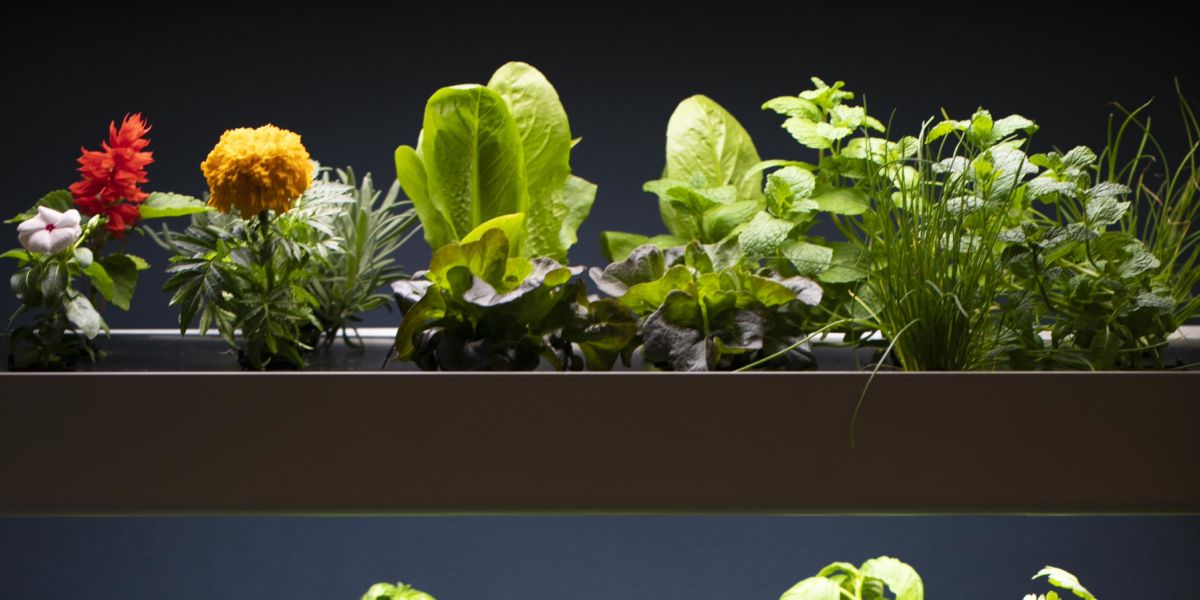
The Indoor Gardening Gear That Can Make Fresh Produce Happen All Year Long
A new wave of growing technology means year-round veggie production is a reality. Which solution is right for you?

Courtesy of Rise Gardens
We only recommend things we love. If you buy something through our site, we might earn a commission.
Most gardeners cede the colder seasons to the whims of winter. Coaxing hearty crops out of the cold earth can prove complicated, and low-yield. Fortunately, there are more companies than ever making products that can keep you in homegrown fresh vegetables year-round. This year I decided to try my hand at small-scale gardening on my balcony with a Farmstand system from Lettuce Grow, which launched in late 2019 and counts Zooey Deschanel among its founders. The company offers a compelling promise: They ship you the starters, and within weeks you’ll have a veritable bounty of herbs and veggies to enjoy. I’ll have to admit I was skeptical when the undulating plastic base and skull-like extensions showed up. Each level includes six circular holes, into which you’ll place your seedlings. But naked of plants, and stacked atop the rounded pyramidal base, the construction resembles a pile of Jack Skellington heads, or some kind of ancient graveyard marker.
There’s a reason they look this way, however. Each aperture is spaced equally to provide access to available light. They bell out in the middle to allow the roots room to spread—and the water to briefly pool around them. Inside the setup, a water pump sits attached to a long PVC pipe. That pump circulates liquid (along with nutrients) to the top of the structure, where it then washes down over the roots, level by level. A timer attached to the outlet facilitates this cycling. This doesn’t just make it easier to grow vegetables. By recycling water, the company claims you’re using 95 percent less of it overall, compared with ground crops. Across the near-500,000 fruits and veggies they’ve grown, they estimate they have saved nearly 10 million gallons of water.
